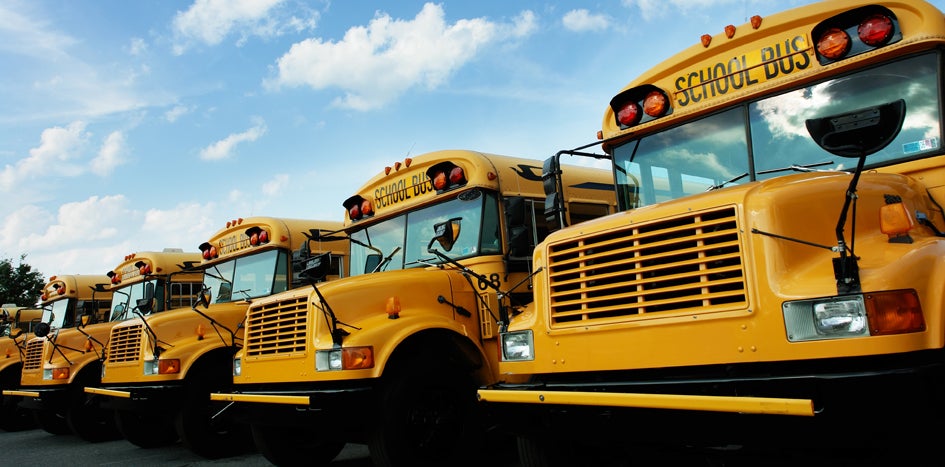The Smart Way to Protect School Property During Extended Breaks
Roof leaks, loose electrical outlets, and other minor maintenance issues are more likely to escape notice when facilities are unoccupied for long periods. Left unaddressed, they can mushroom into major repairs or replacements. The risk of theft and vandalism also grows in the absence of watchful employees and students.
Follow these tips to help ensure your administrative offices, campuses, and other facilities are in good condition and ready to welcome staff and students back from extended breaks, such as summer or holiday break.
Lay the groundwork
Each year in December, the Fund recommends members shore up their facilities before closing for the holidays. Some of those to do’s are just as relevant during extended breaks. Conduct a walk-through to check for vulnerabilities and other risks mentioned below.
Stay on top of equipment maintenance
Defective boilers, fire sprinklers, smoke detectors, fuel tanks, and other equipment can cause accidents that harm people and property. Stay on top of routine inspections and preventative maintenance during extended breaks. If your organization is a Fund member with Property coverage, take advantage of boiler inspections at no additional cost.
Test emergency equipment
Test fire alarms, sprinkler systems, and other emergency equipment before the break. Additionally, communicate clear protocols for responding to unexpected incidents, such as unauthorized access, vandalism, or weather-related damage, to staff responsible for monitoring the facility during the holiday period.
Let the air conditioner run
Mold thrives in heat and humidity. Make your facilities less hospitable by setting the air conditioning to 85 degrees or lower. You can also reduce the risk of mold in schools by controlling indoor moisture. For example, give freshly shampooed carpet a chance to dry before closing doors and windows.
Eliminate hazards
Take time to address hazards such as debris, broken stairs, and chemical containers that could injure staff, emergency personnel, contractors, and visitors.
Pro tip: Facilities that meet the definition of "Vacant Buildings " are subject to coverage exclusions. See page five of your Fund coverage agreement for details.
Make security a priority
Consider these strategies to beef up on-site security and reduce the risk of theft and vandalism. If school facilities will host community events or activities during the break, ensure proper screening of participants, maintain clear guidelines, and restrict access to non-essential areas.
Keep security devices in service
That includes emergency lighting, intruder detection systems, and security cameras. Tell your alarm company about empty facilities, and give them your emergency contact information.
Secure the premises
Before the break, ensure that all doors, windows, and entry points are locked and properly secured. Verify that access control systems are functioning, and deactivate non-essential keycards or codes. Facility doors should be unobstructed and in good condition. Make sure door components, including locks, work as they should. For schools with alarms or surveillance systems, confirm they are operational and monitored during the break.
Protect valuables
Store your computers, career and technology program equipment, and other valuables in secured areas, and elevate it to protect against flooding. Valuables include employee and student personally identifiable information (PII).
A strong cybersecurity program protects digital PII, but don’t forget to lock HR offices, special education offices, and other areas that house hard-copy employee and student records.
Consider security guards
You could contract with a vendor to provide 24/7 security or to visit the property at random times during the week.
Maintain a presence
When you go on a long vacation, do you set your lights on a timer and ask your neighbors to keep an eye on the place? You can apply those same strategies to protect temporarily unoccupied property.
Enlist the community
Local law enforcement, first responders, and even neighbors have a vested interest in helping prevent damage, theft, and vandalism. Collaborate with them to increase patrols or incorporate schools into their holiday watch schedules. Make sure they know how to contact you if there is an emergency or if they see suspicious activity.
Shore up your protocols
Communicate clear protocols for responding to unexpected incidents, such as unauthorized access, vandalism, or weather-related damage, to staff responsible for monitoring the facility during the holiday period.
Inspect the property regularly
Choose different days and times to walk school property. Check for weather-related damage, minor maintenance issues you can address, and evidence of tampering.
Install motion or timed lighting
Not only does lighting deter crime, but it also discourages animals from taking up residence in your facilities. Install temporary external lighting or signage to deter loitering.
Keep up with landscaping
Trimming trees, lawns, and shrubs is about more than keeping up appearances. Closely cropped landscaping also gives criminals fewer places to hide.
Editor's note: This article was originally published in 2022. It has been updated for accuracy and comprehensiveness.
Report a Claim
Fund members can report workers’ compensation, auto, liability, property, and cyber claims 24/7.
Claim Status
Fund members as well as health care providers, auto body shops, roofing contractors, cybersecurity companies, and other third parties can contact our Member Service Advisors for information about claims.
Risk Solutions Staff
The TASB risk solutions team includes risk solutions consultants and communications professionals who deliver training, consultations, articles, and resources that help Fund members control losses and their associated costs.
You May Also Like…
View All Related Insights
The Basics of School Fleet Management
Your community relies on your district's vehicles, so take care of your buses, trucks, and cars with these fleet management basics.

Want to Worry Less About Data Breaches?
The accidental release of sensitive information can tarnish your organization’s reputation. Data loss prevention tools help ensure that when employees make mistakes, technology has your back.

Elements of Accident Prevention Plans
An accident prevention plan can keep employees safe at work and keep them from taking days off of work. We broke down how to create one and what to include.

Protect Your Fleet With a Preventative Maintenance Plan
If you want to protect your vehicles and their passengers, you need an effective preventative maintenance plan.
